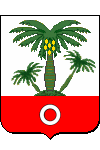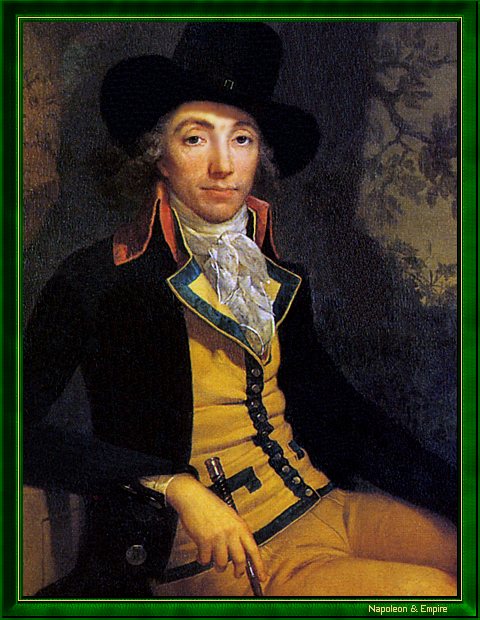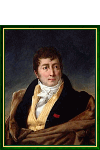Charles-Louis Cadet de Gassicourt
Knight of the French Empire
Pronunciation:

Charles-Louis Cadet de Gassicourt was born in Paris on January 23, 1769. According to the civil register, his father was a famous pharmacist, collaborator of Antoine Laurent de Lavoisier and member of high society. But rumor had it, as attested by the memoirs of General Baron Paul Thiébault, that Charles-Louis was in fact a bastard son of Louis XV. The rest of his career, however, seemed to belie this rumor: he became a renowned pharmacist and a convinced republican.
Yet pharmacy was not Charles-Louis Cadet de Gassicourt's first vocation. Resisting his father's wishes, he initially set his sights on a literary career, probably under the influence of Condorcet, Buffon, Franklin and d'Alembert, all familiar faces at the family salon. However, he went on to study law, becoming a lawyer in 1787.
Gifted with a certain talent for oratory, wealthy thanks to the combined graces of a pension from his father and his marriage (January 1789) - but the two spouses, equally fickle, divorced almost as soon as the Revolution gave them the right to do so - he pleaded little but wisely and successfully, often putting himself at the service of poor people, whom he defended in a thoroughly Voltairian spirit.
He welcomed the Revolution with enthusiasm, before being swallowed up, like so many others, by its tumultuous course. As a member of the National Guard and the Société de bienfaisance judiciaire (forerunner of legal aid), he saved his uncle from the massacres of September 1792. In the years that followed, he testified on behalf of a ci-devant nobleman, then condemned the excesses of the Revolutionary Tribunal and vigorously opposed the Convention in 1794, when he presided over the Mont-Blanc section (sections were territorial and administrative divisions of the city of Paris created by the Revolution, and which disappeared in 1795). Sentenced to death in absentia, executed in effigy on the Place de Grève, he had to flee to Berry.
Throughout these years, he also pursued a successful career as a polygrapher, writing a number of plays with easy, good-natured humor that appealed to the public: Le souper de Molière (1795), Proverbe ultra-bête.
This period of his life came to an end in 1799, after his return from Berry and the review of his trial. He then began studying pharmacy, so as not to lose his shares in his father's business, which had just died. He was admitted as a pharmacist on 26 prairial an VIII (1800).
With his pharmacy flourishing, he was once again able to give free rein to his philanthropic inclinations. In 1802, at his instigation, Prefect Dubois set up the Comité de Salubrité Publique (Public Health Committee), and Charles-Louis Cadet de Gassicourt became its Secretary-Rapporteur, an office he held until his death. In this capacity, he visited prisons, checked the healthiness of inmates' accommodation and food, and studied the relationship between death rates and occupation, making him a precursor of occupational medicine. In 1803, he helped found the Société des pharmaciens de la Seine and published a Dictionary of Chemistry.
In 1804, he published a Formulaire magistral (Magisterial Formulary), which went through no fewer than seven editions, and organized the first exhibition of industrial products. He was also appointed "ordinary pharmacist to the Emperor", which gave him lodgings at the Tuileries as well as at other imperial residences, and enabled him to accompany Napoleon I on his campaigns.
Pursuing his literary work in a more elevated register than in his youth, he wrote numerous works on the sciences, but also indulged in a few writings broaching François-René de Chateaubriand and Madame de Staël.
On July 15, 1810, he was made a Knight of the Empire. In 1814, it was to him that Napoleon turned to obtain the dose of poison that he absorbed on April 12 in a moment of despair. But it was also he who saved the Emperor from poisoning.
A Doctor of Science since 1812, Cadet de Gassicourt crowned his career by presiding over the Société de pharmacie in 1818, before joining the Académie de Médecine.
Under the Restoration, Louis XVIII made him a Chevalier de la Légion d'Honneur, but this did not prevent him from speaking out strongly against the king and divine right. He died in Paris on November 21, 1821.
He was buried in Paris, in the Père Lachaise cemetery, 39th division .
"Charles-Louis Cadet de Gassicourt", by Pierre-Paul Prud'hon (Cluny 1758 - Paris 1823).

Other portraits

"Charles-Louis Cadet de Gassicourt, Knight of the French Empire", by Isidore Pean Dupavillon, a.k.a. Pineau du Pavillon (Nantes 1790 - ? 1856).